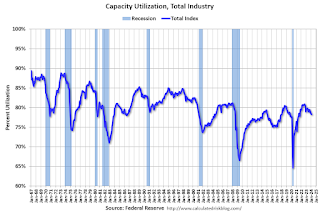Uncategorized
LuminUltra participates in innovative wastewater surveillance pilot project at Toronto Pearson
LuminUltra participates in innovative wastewater surveillance pilot project at Toronto Pearson
PR Newswire
FREDERICTON, NB, Jan. 9, 2023
FREDERICTON, NB , Jan. 9, 2023 /PRNewswire/ – LuminUltra has partnered with the Greater Toronto Airports Author…

LuminUltra participates in innovative wastewater surveillance pilot project at Toronto Pearson
PR Newswire
FREDERICTON, NB, Jan. 9, 2023
FREDERICTON, NB , Jan. 9, 2023 /PRNewswire/ - LuminUltra has partnered with the Greater Toronto Airports Authority (GTAA) to implement a cutting-edge, on-site laboratory to perform wastewater surveillance testing at Pearson International Airport. This pilot project, supported in part by funding from the National Research Council of Canada Industrial Research Assistance Program, is using LuminUltra's technology to test for the presence of sub-variants of the SARS-CoV-2 Omicron virus as well as Monkeypox in wastewater effluent from planes and airport terminals.
"This project aims to demonstrate that wastewater surveillance testing is an important tool for keeping travel open and available to Canadians," says Dwayne Macintosh, Director of Safety and Security at the Greater Toronto Airports Authority. "As Canada's largest airport, Toronto Pearson is leading the industry in exploring trials that leverage testing technology like this to help understand how data from airports can support public health officials in making smarter, more timely decisions."
Testing effluent for the presence of specific viruses or pathogens has become a common, non-invasive method for measuring community health trends that has been used throughout the pandemic. Earlier in 2022, LuminUltra delivered on a contract with the U.S. Centers of Disease Control (CDC) to process samples from across the U.S. as part of its National Wastewater Surveillance System.
"Wastewater is a very complicated sample type, which makes testing it very different than the clinical testing of individuals using nasal or throat swabs," says Pat Whalen, Chair and CEO of LuminUltra. "Fortunately, our company has a decades-long history of working with difficult sample types, ranging from wastewater to oil and gas sludges, which is why we've been called upon multiple times by organizations like the CDC, the Government of Canada and private companies around the world to deliver this critical surveillance testing. We're very proud to be able to step up and help."
The onsite laboratory at Pearson is equipped to run all required steps to process the PCR test for the specific targets, resulting in a rapid turnaround time from sample to result. LuminUltra has provided all required components and staffing, including auto extraction units and high-throughput PCR devices, and has developed the assays that test for the specific targets: Omicron sub-variants and Monkeypox. The company is also able to add assays for more targets if needed.
"We've developed a very agile process for developing new assays," says Anda Quintero, Laboratory Scientific Director at LuminUltra. "Our customers have relied on us to be able to respond quickly to newly emerging variants, which helps them ensure they're looking at the complete picture."
This announcement is further evidence of LuminUltra's ability to deliver molecular testing solutions in a range of applications including biofouling, bioprocessing and biosecurity through both service and product offerings.
"We pride ourselves on being our customers' partners in microbial management," Whalen says. "We understand the risks that microbial activity, including viruses and pathogens, can pose. And we have a complete portfolio of products and services that can meet customers' needs to identify this activity across many sample types, volumes and testing targets. In this case, we've implemented some of our largest scale solutions to be able to meet the needs of Canada's largest airport and enable people to work, live and play with confidence."
Founded in 1995, LuminUltra is a global leader in applied molecular biology diagnostics, with solutions and services that deliver accurate and actionable feedback in bioprocessing, biofouling, and biosecurity applications. With operations in six countries, LuminUltra serves dozens of Fortune 500 customers across more than 100 countries. In recent years it has been on an accelerated growth path, acquiring multiple companies after forming a partnership with XPV Water Partners.
The Greater Toronto Airports Authority is the operator of Toronto – Lester B. Pearson International Airport, Canada's largest airport and a vital connector of people, businesses and goods. Toronto Pearson has been named "Best Large Airport in North America serving more than 40 million passengers" for five years in a row by Airports Council International (ACI), the global trade representative of the world's airports. In recognition of its Healthy Airport program, ACI has also awarded Toronto Pearson the "Best hygiene measures in North America" award for three years running, and Toronto Pearson was the first Canadian airport to receive ACI's global health accreditation for its response to COVID-19.
View original content to download multimedia:https://www.prnewswire.com/news-releases/luminultra-participates-in-innovative-wastewater-surveillance-pilot-project-at-toronto-pearson-301715589.html
SOURCE LuminUltra
Uncategorized
One city held a mass passport-getting event
A New Orleans congressman organized a way for people to apply for their passports en masse.

While the number of Americans who do not have a passport has dropped steadily from more than 80% in 1990 to just over 50% now, a lack of knowledge around passport requirements still keeps a significant portion of the population away from international travel.
Over the four years that passed since the start of covid-19, passport offices have also been dealing with significant backlog due to the high numbers of people who were looking to get a passport post-pandemic.
Related: Here is why it is (still) taking forever to get a passport
To deal with these concurrent issues, the U.S. State Department recently held a mass passport-getting event in the city of New Orleans. Called the "Passport Acceptance Event," the gathering was held at a local auditorium and invited residents of Louisiana’s 2nd Congressional District to complete a passport application on-site with the help of staff and government workers.
'Come apply for your passport, no appointment is required'
"Hey #LA02," Rep. Troy A. Carter Sr. (D-LA), whose office co-hosted the event alongside the city of New Orleans, wrote to his followers on Instagram (META) . "My office is providing passport services at our #PassportAcceptance event. Come apply for your passport, no appointment is required."
More Travel:
- A new travel term is taking over the internet (and reaching airlines and hotels)
- The 10 best airline stocks to buy now
- Airlines see a new kind of traveler at the front of the plane
The event was held on March 14 from 10 a.m. to 1 p.m. While it was designed for those who are already eligible for U.S. citizenship rather than as a way to help non-citizens with immigration questions, it helped those completing the application for the first time fill out forms and make sure they have the photographs and identity documents they need. The passport offices in New Orleans where one would normally have to bring already-completed forms have also been dealing with lines and would require one to book spots weeks in advance.
These are the countries with the highest-ranking passports in 2024
According to Carter Sr.'s communications team, those who submitted their passport application at the event also received expedited processing of two to three weeks (according to the State Department's website, times for regular processing are currently six to eight weeks).
While Carter Sr.'s office has not released the numbers of people who applied for a passport on March 14, photos from the event show that many took advantage of the opportunity to apply for a passport in a group setting and get expedited processing.
Every couple of months, a new ranking agency puts together a list of the most and least powerful passports in the world based on factors such as visa-free travel and opportunities for cross-border business.
In January, global citizenship and financial advisory firm Arton Capital identified United Arab Emirates as having the most powerful passport in 2024. While the United States topped the list of one such ranking in 2014, worsening relations with a number of countries as well as stricter immigration rules even as other countries have taken strides to create opportunities for investors and digital nomads caused the American passport to slip in recent years.
A UAE passport grants holders visa-free or visa-on-arrival access to 180 of the world’s 198 countries (this calculation includes disputed territories such as Kosovo and Western Sahara) while Americans currently have the same access to 151 countries.
stocks pandemic covid-19 grantsUncategorized
Fast-food chain closes restaurants after Chapter 11 bankruptcy
Several major fast-food chains recently have struggled to keep restaurants open.

Competition in the fast-food space has been brutal as operators deal with inflation, consumers who are worried about the economy and their jobs and, in recent months, the falling cost of eating at home.
Add in that many fast-food chains took on more debt during the covid pandemic and that labor costs are rising, and you have a perfect storm of problems.
It's a situation where Restaurant Brands International (QSR) has suffered as much as any company.
Related: Wendy's menu drops a fan favorite item, adds something new
Three major Burger King franchise operators filed for bankruptcy in 2023, and the chain saw hundreds of stores close. It also saw multiple Popeyes franchisees move into bankruptcy, with dozens of locations closing.
RBI also stepped in and purchased one of its key franchisees.
"Carrols is the largest Burger King franchisee in the United States today, operating 1,022 Burger King restaurants in 23 states that generated approximately $1.8 billion of system sales during the 12 months ended Sept. 30, 2023," RBI said in a news release. Carrols also owns and operates 60 Popeyes restaurants in six states."
The multichain company made the move after two of its large franchisees, Premier Kings and Meridian, saw multiple locations not purchased when they reached auction after Chapter 11 bankruptcy filings. In that case, RBI bought select locations but allowed others to close.
Image source: Chen Jianli/Xinhua via Getty
Another fast-food chain faces bankruptcy problems
Bojangles may not be as big a name as Burger King or Popeye's, but it's a popular chain with more than 800 restaurants in eight states.
"Bojangles is a Carolina-born restaurant chain specializing in craveable Southern chicken, biscuits and tea made fresh daily from real recipes, and with a friendly smile," the chain says on its website. "Founded in 1977 as a single location in Charlotte, our beloved brand continues to grow nationwide."
Like RBI, Bojangles uses a franchise model, which makes it dependent on the financial health of its operators. The company ultimately saw all its Maryland locations close due to the financial situation of one of its franchisees.
Unlike. RBI, Bojangles is not public — it was taken private by Durational Capital Management LP and Jordan Co. in 2018 — which means the company does not disclose its financial information to the public.
That makes it hard to know whether overall softness for the brand contributed to the chain seeing its five Maryland locations after a Chapter 11 bankruptcy filing.
Bojangles has a messy bankruptcy situation
Even though the locations still appear on the Bojangles website, they have been shuttered since late 2023. The locations were operated by Salim Kakakhail and Yavir Akbar Durranni. The partners operated under a variety of LLCs, including ABS Network, according to local news channel WUSA9.
The station reported that the owners face a state investigation over complaints of wage theft and fraudulent W2s. In November Durranni and ABS Network filed for bankruptcy in New Jersey, WUSA9 reported.
"Not only do former employees say these men owe them money, WUSA9 learned the former owners owe the state, too, and have over $69,000 in back property taxes."
Former employees also say that the restaurant would regularly purchase fried chicken from Popeyes and Safeway when it ran out in their stores, the station reported.
Bojangles sent the station a comment on the situation.
"The franchisee is no longer in the Bojangles system," the company said. "However, it is important to note in your coverage that franchisees are independent business owners who are licensed to operate a brand but have autonomy over many aspects of their business, including hiring employees and payroll responsibilities."
Kakakhail and Durranni did not respond to multiple requests for comment from WUSA9.
bankruptcy pandemicUncategorized
Industrial Production Increased 0.1% in February
From the Fed: Industrial Production and Capacity Utilization
Industrial production edged up 0.1 percent in February after declining 0.5 percent in January. In February, the output of manufacturing rose 0.8 percent and the index for mining climbed 2.2 p…

Industrial production edged up 0.1 percent in February after declining 0.5 percent in January. In February, the output of manufacturing rose 0.8 percent and the index for mining climbed 2.2 percent. Both gains partly reflected recoveries from weather-related declines in January. The index for utilities fell 7.5 percent in February because of warmer-than-typical temperatures. At 102.3 percent of its 2017 average, total industrial production in February was 0.2 percent below its year-earlier level. Capacity utilization for the industrial sector remained at 78.3 percent in February, a rate that is 1.3 percentage points below its long-run (1972–2023) average.Click on graph for larger image.
emphasis added
This graph shows Capacity Utilization. This series is up from the record low set in April 2020, and above the level in February 2020 (pre-pandemic).
Capacity utilization at 78.3% is 1.3% below the average from 1972 to 2022. This was below consensus expectations.
Note: y-axis doesn't start at zero to better show the change.
 The second graph shows industrial production since 1967.
The second graph shows industrial production since 1967.Industrial production increased to 102.3. This is above the pre-pandemic level.
Industrial production was above consensus expectations.
-

 Uncategorized3 weeks ago
Uncategorized3 weeks agoAll Of The Elements Are In Place For An Economic Crisis Of Staggering Proportions
-

 International1 week ago
International1 week agoEyePoint poaches medical chief from Apellis; Sandoz CFO, longtime BioNTech exec to retire
-

 Uncategorized4 weeks ago
Uncategorized4 weeks agoCalifornia Counties Could Be Forced To Pay $300 Million To Cover COVID-Era Program
-

 Uncategorized3 weeks ago
Uncategorized3 weeks agoApparel Retailer Express Moving Toward Bankruptcy
-

 Uncategorized4 weeks ago
Uncategorized4 weeks agoIndustrial Production Decreased 0.1% in January
-

 International1 week ago
International1 week agoWalmart launches clever answer to Target’s new membership program
-

 Spread & Containment2 days ago
Spread & Containment2 days agoIFM’s Hat Trick and Reflections On Option-To-Buy M&A
-

 Uncategorized4 weeks ago
Uncategorized4 weeks agoRFK Jr: The Wuhan Cover-Up & The Rise Of The Biowarfare-Industrial Complex



















